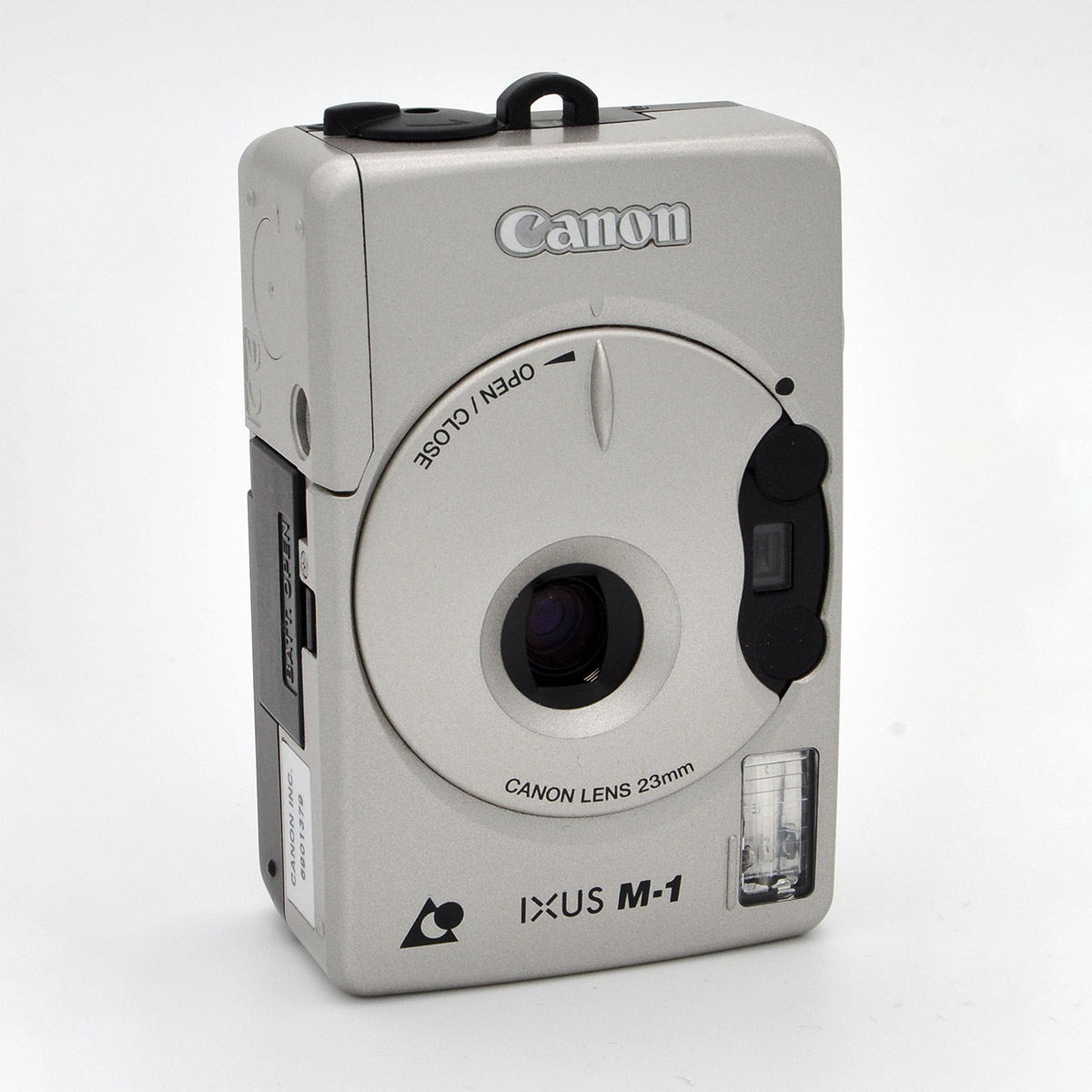Canon Ixus M1
Of the film various formats that had their entrances and their exits in the 20th century, APS or “Advanced Photo System” was probably the shortest lived, with little over a decade from launch to discontinuation. In the years running up to the age of the affordable digital camera, APS was an attempt to add convenient features to cameras aimed firmly at the non-technical amateur market. The film is 24mm wide, in other words it’s a third smaller than 35mm, and this allows the cameras to be correspondingly more compact. All the major manufacturers produced APS models, with Canon introducing the IXUS in 1996, and the IXUS II three years later. Interestingly, when Canon went on to make compact digital cameras, they retained not only the IXUS name, but also pretty much the same body, only this time with an LCD screen on the back.
You see these little APS cameras regularly in Charity Shops and boot sales, I think I paid £2 for mine. The cameras may be easy to come by, but film is another matter, production stopped in 2011, so the remaining expired stock on the market will eventually dry up. I was fortunate in that an AP reader kindly sent me his stash of APS after reading a previous column about an APS SLR.
The IXUS II is well specified for its size, with a 23-46mm auto-focus zoom lens, and automatic exposure with shutter speeds ranging from 2 seconds to 1/800th. It even has dioptre correction for the viewfinder, something normally found on high end cameras.
APS cassettes held either 25 or 40 exposures and were coded to tell the camera their speed and length. Most APS cameras offered a choice of three aspect ratios, designated as H, C and P for “High Definition”, “Classic” and “Panorama” with prints produced to match, what may not be generally known, is that the camera always fills the entire negative, but that the chosen format, as seen in the viewfinder, is written onto a magnetic coating built into the film, and subsequently read by the processing machine to decide which crop to apply to the finished print. This is all irrelevant to me, as I develop my own APS films using a modified Patterson reel, adapted to take the narrow film.
The compact nature of the IXUS makes it ideal for taking on holiday, so I slipped mine into a pocket when I took a mini break in Bilbao earlier this year. Inspecting the negatives as they were hanging out to dry, I thought this was a shot of a jet engine taken through the plane’s window, but after scanning I realised it was in fact a detail of a Jeff Koons sculpture entitled “Tulips”, which is on display at the Guggenheim Museum. The Agfa ISO 200 colour negative film that I used expired in 2005, but even so, the quality is pretty good, certainly good enough to satisfy the market at which the camera was aimed.


